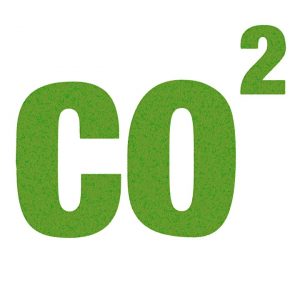Bremer Bay, a coastal haven nestled on the southern coast of Western Australia, has steadily risen as a must-visit destination for marine enthusiasts and tourists. While the bay itself offers stunning landscapes and serene beaches, it’s the deep blue waters beyond that hold the real treasure: the magnificent killer whales. In this article, we spotlight the unparalleled experience offered by Whale Watch Western Australia, the premier choice for Bremer Bay killer whale tours.
1. Bremer Bay: A Marine Wonderland
Bremer Bay’s marine ecosystem is a marvel in itself. The Bremer Canyon, located off the coast, is a hotspot of marine biodiversity. This deep-sea trench teems with life, attracting a myriad of marine species, but none as awe-inspiring as the killer whale.
2. Whale Watch Western Australia: The Ultimate Marine Experience
- Expertise and Passion: With years of experience under their belt, Whale Watch Western Australia stands out as the leading provider of killer whale tours in Bremer Bay. Their team, comprising seasoned mariners and marine biologists, ensures that every tour is both educational and exhilarating.
- State-of-the-Art Vessels: Safety and comfort are paramount. Whale Watch Western Australia boasts modern vessels equipped with the latest technology, ensuring smooth sailing as you venture into the deep blue.
- Sustainability at Heart: Recognizing the importance of marine conservation, Whale Watch Western Australia adheres to eco-friendly practices, ensuring minimal disturbance to the marine environment.
3. Dive into the World of Killer Whales
- Unparalleled Sightings: Bremer Bay is one of the few places globally where one can witness killer whales in their natural habitat. The tours offer a front-row seat to observe these majestic creatures as they hunt, play, and interact.
- Educational Journey: Beyond the thrill of sightings, participants gain insights into the life of killer whales. Expert guides share fascinating facts about orca behaviour, their role in the ecosystem, and the significance of the Bremer Canyon.
- Photography Opportunities: For photography enthusiasts, the tours present a golden opportunity. Capture stunning shots of orcas against the backdrop of the vast ocean, creating memories that will last a lifetime.
4. Beyond Killer Whales: A Diverse Marine Showcase
While killer whales are the star attraction, Bremer Bay’s waters have much more to offer. Tours with Whale Watch Western Australia often feature sightings of other marine giants, including:
- Blue Whales: The largest animal on Earth, blue whales are a sight to behold. Their graceful movements and sheer size leave participants in awe.
- Dolphins: Playful and agile, pods of dolphins often accompany the vessel, riding the bow wave and showcasing their acrobatics.
- Seals and Sea Lions: These marine mammals can be spotted lounging on rocks or playfully swimming in the waters.
5. Booking Your Adventure with Whale Watch Western Australia
Ready to embark on this once-in-a-lifetime journey? Booking with Whale Watch Western Australia is a seamless process. Their website provides detailed information on tour schedules, pricing, and what to expect. They also offer a genuine sighting guarantee, underscoring their confidence in providing an unforgettable experience.
6. In Conclusion: A Journey of Discovery
Bremer Bay tours with Whale Watch Western Australia are more than just a tourist activity; they are a journey into the heart of the ocean. As you witness the raw power and elegance of killer whales and other marine giants, it serves as a reminder of the wonders of the natural world. With professional guidance, top-notch amenities, and a deep respect for marine life, Whale Watch Western Australia promises an experience that will be etched in your memory forever.
…


 Thus, in addition to having to comply by law with such determination, the company can benefit from positive environmental marketing. In this way, the company gains by carrying out the best planning for the inventory, both in the reduction of costs related to the stages of its process and production chain, as well as through programs and practices of environmental compensation and carbon credit, such as the decomposition of vegetation and protection of green areas.
Thus, in addition to having to comply by law with such determination, the company can benefit from positive environmental marketing. In this way, the company gains by carrying out the best planning for the inventory, both in the reduction of costs related to the stages of its process and production chain, as well as through programs and practices of environmental compensation and carbon credit, such as the decomposition of vegetation and protection of green areas. Several factors also exert influence when analyzing carbon under these conditions:
Several factors also exert influence when analyzing carbon under these conditions: A vegetation cover is formed by individuals belonging to one or more species. In the case of a natural vegetation cover, several species are occupying a particular area, which can be exemplified by a forest or a natural field, which have a variety of species of trees, shrubs, and grasses. On the other hand, reforestation of eucalyptus can be formed by individuals of the same species of tree (in this case, Eucalyptus spp ), as well as the grass is composed of the same species of grass.
A vegetation cover is formed by individuals belonging to one or more species. In the case of a natural vegetation cover, several species are occupying a particular area, which can be exemplified by a forest or a natural field, which have a variety of species of trees, shrubs, and grasses. On the other hand, reforestation of eucalyptus can be formed by individuals of the same species of tree (in this case, Eucalyptus spp ), as well as the grass is composed of the same species of grass.